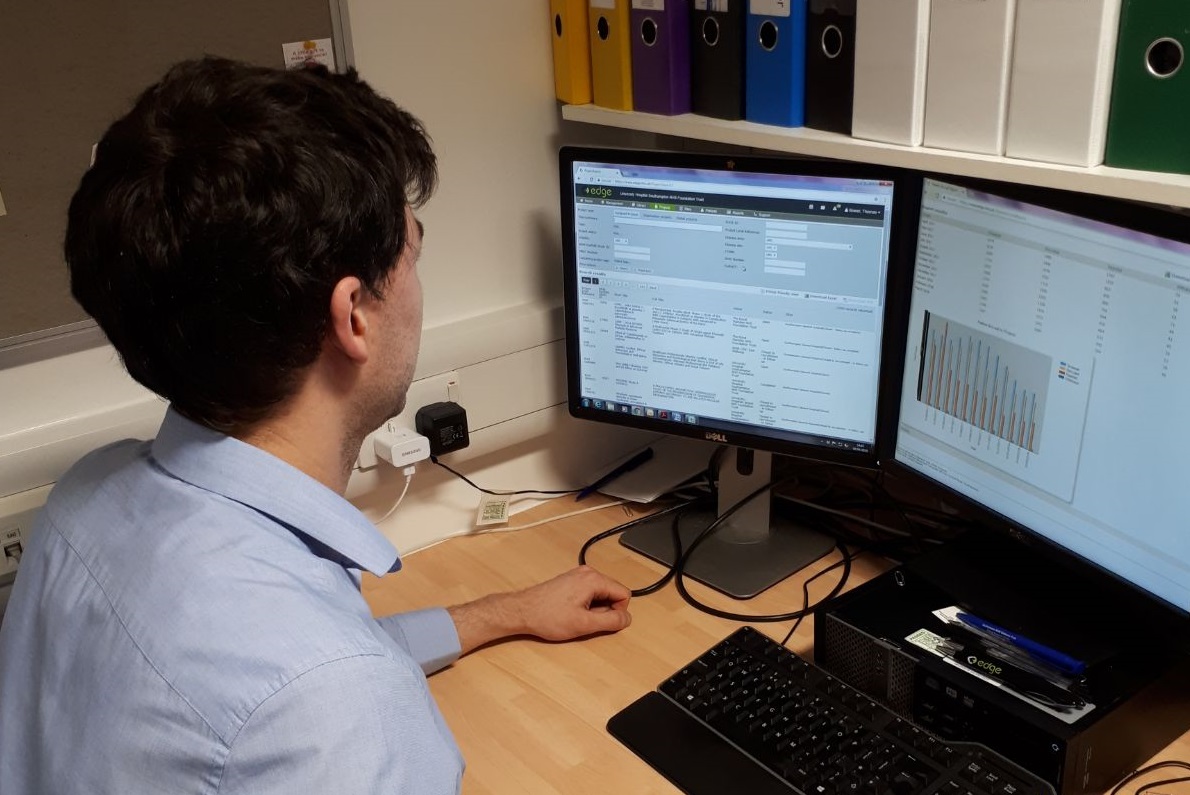A study is presented to the Juravinski Cancer Centre (JCC) Clinical Trials Department (CTD) – it could be presented by an investigator, an academic co-operative group, or a commercial sponsor – but how does it make its way into EDGE and what happens to it along the way?
Once a study is presented to the CTD, it is entered into EDGE by one of our Trial Activation Coordinators. All of the pertinent project and site level information goes in, as well as some site specific Attributes (e.g. research team assignment, specific dates and comments, etc). The study is booked to a Protocol Review Committee (PRC) meeting where the PI discusses the scientific merit of the study and resources required. Documents are posted into the site Files in EDGE for all to view and use to prepare for the meeting. Meeting dates are logged in EDGE in Attributes. Once the committee approves the study to move forward, the study moves to being “in set up” in EDGE and investigators and the research team can track the activation process and recruitment metrics through Shared Reports.
During activation, the Trial Activation Coordinator ensures all of the current approved regulatory documents are uploaded to EDGE and enters trial activation milestones into Attributes. A simple contract Attribute is used to track the contracts process from review to execution, and well as a finance Attribute to track per-case funding (if applicable). As the majority of our studies involve drugs, our Clinical Trials Pharmacy Team tracks their activation and amendment processes in Attributes. Other impacted departments use EDGE to reference protocols to create their internal procedures or view Shared Reports regarding utilization of resources.
Once activated, the study then transfers to the Clinical Research Coordinator (CRC), who is responsible for entering their patients into EDGE and for working in tandem with the assignment Clinical Research Associate (CRA) to ensure their patient statuses are up-to-date. CRCs and CRAs are frequently in EDGE to look up protocols, print consent forms, view study assignments, and book monitoring visits. They also work closely with the assigned Ethics Secretary who submits all post initial approval REB submission (e.g. amendments, annuals, etc), tracks this information in EDGE site Workflows, and uploads approvals and regulatory documents into site Files. Finance is able to track start-up costs and use the information entered in Workflows, Attributes, and the patient status workflow to determine payments. Investigators are in EDGE more and more as we have made EDGE our sharepoint for our current open trials via Shared Reports. As a study winds down, the CRC is in contact with our EDGE Lead Admin and the assigned Ethics Secretary to close out the study.
With all of these separate users working together, we are able to pull extremely detailed reports, which are circulated to management, senior leadership, investigators, and staff to keep everyone informed of the good work happening in the CTD. We merge EDGE reports with reports from our electronic medical record to create an even broader picture involving both the regulatory workload and the clinical workload associated with a study. The information is distributed regularly via email through dashboards, newsletters, and raw data, and is also posted in a special Investigator and Staff file area in General Documents.
We highly promote idea sharing and collaboration and we are very involved with our fellow Canadian EDGE sites (as well as our UK friends!). We look forward to rolling out new functionality around the Finance tab, tracking of CRF data entry to ensure timeliness of data submissions, tracking of training certifications, developing a patient level tracking system for lab specimens, and further refining our use of EDGE.
Blog post written by Bianca Bier
Network Coordinator, JCC







